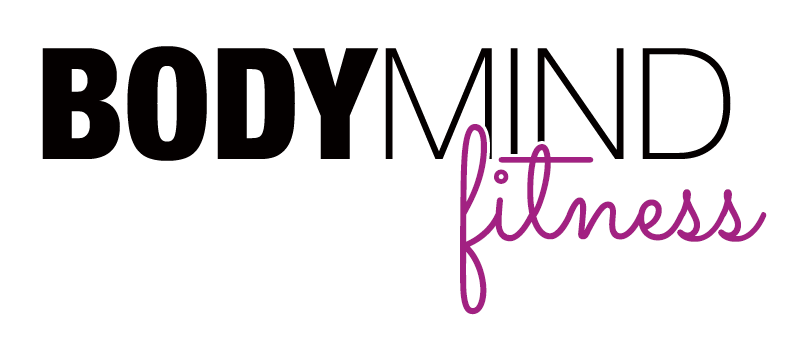I’m sitting in Coffee Culture with a Medium Salted Caramel Latte on my right; my periwinkle blue water bottle to my left and staring at my blinking cursor trying to decide how I want to write this blog. I'd be lying if I said this was the first time this has ever happened to me.
Of all Pelvic Floor related things that I've helped 100s of women work through over the years, Pelvic Organ Prolapse (POP) seems to be the one that the one that brings on the most amount of embarrassment and anxiety. And when I sit put together content that will help you navigate your symptoms through movement, it’s always my hope to empower you, but part of that empowerment comes from having information so you can see what exactly your symptoms are and understand that you can improve or even overcome them.
I also want you to know, you’re not alone. Some studies show that up to 80% of postpartum populations have some degree of POP at 6 weeks after the birth of their baby. If childbirth is a distant memory, or maybe you've never had children, then it's also important to know that around 50% of women over the age of 50 will experience vaginal pelvic organ prolapse.
Keep in mind, this blog is meant to be informational, and shouldn't be used to self diagnose. If you think you have Pelvic Organ Prolapse please book an appointment with your friendly neighbour hood pelvic floor physiotherapist or physical therapist (depending on where in the world you’re reading this).
So let’s start with what the heck is pelvic organ prolapse (POP)?
Pelvic Organ Prolapse happens when one or more of the pelvic organs organs (uterus, bowel,bladder) starts descending or bulging into the vagina.
The POP is often diagnosed by grades of either 1-4 or 1-3 depending where you live. The grade of your prolapse can also change throughout the day, with your cycle or hormone levels, or if you’re tired. Trust me when I say that POP isn’t life threatening, it can be painful, uncomfortable, and can have a massive effect on your life and how you move throughout your day.
The symptoms many describe about their prolapse is a feeling of heaviness, dragging, bulging or like a tampon pushing out of your vagina. And some people say they don't feel anything at all - as if this isn't confusing enough as it is.
POP can show up suddenly, like after a very heavy lifting, or childbirth. This was my own personal experience during the delivery of my second daughter. I turned to my husband as soon as they passed her to me and said, "I'm pretty sure I just gave myself a prolapse." Turns out I was right when it was confirmed I had a minor prolapse at my 6 weeks checkup with my Pelvic Floor Physiotherapist (shout out to Angela).
Other times prolapse can take years to appear, which seems to be more common, and typically we do something (like the aforementioned heavy lifting, childbirth) that creates the prolapse. A common thing to look at in this scenario is posture, and a lot of rounding of the upper back, which can create pressure on the internal organs pushing them down, but also chronic coughing, family history and weight can be contributing factors.
Pelvic Organ Prolapse can also happen to women who've had a hysterectomy.
While there’s a lot of advice given in terms of what to do about it like
- kegels* (let’s come back to this one)
- avoiding lifting anything above [X] amount of weight
- drinking lots of water
- eating high fibre foods to avoid constipation… really, trying to avoid any bearing down to move your bowels is ideal
- and surgery (another thing I want to come back to)
Don't get me wrong, there's nothing wrong with these tips per say, but as with most things it depends if these are the right options for you, and as always I would highly recommend getting a diagnosis from a pro, instead of guessing what would work best.
I'm also often asked, how can I avoid Pelvic Organ Prolapse. Truth is, I don’t know. At the time of writing this blog, there’s no clear-cut evidence of what to do to avoid getting a prolapse, and I would default to my views on most things pelvic health related, the education piece is missing. Considering this is such an important part of our bodies, we spend most of our lives pretending it doesn't exit until something goes wrong. And it's not just when it comes to pregnancy and postpartum recovery, but also when it comes to preparing those with prolapse before they go ahead with surgery (told you I’d come back around to this one).
I want to start by saying, yes I am a big promoter of using the pelvic floor in regular exercise to help improve symptoms, but surgery is an option, and there are times when movement and exercise strategies can only take you so far in terms of symptom-relief and the prolapse itself, and if surgery feels like the right route for you to go, please do! But it’s still a surgery, it comes with some risk and downtime to recover.
If you're considering surgery, I want you to know this about prolapse surgery specifically, 50% of women who have the prolapse surgery, their prolapse will come back, and 29% will have a repeat surgery within a couple of years. Why? Because many times no one is addressing how what led to the prolapse in the first place. If we continue to do the same things that brought on POP, the prolapse will “come back.” Having a team who have expertise in pelvic health and prolapse like a Pelvic Floor PT and a movement pro with experience in pelvic health (Hey! I’m Dominique nice to meet you), will help you pin point the cause of your prolapse, and start working towards elevating those symptoms and lead to a higher success rate post surgery when you continue to use the recommended strategies.
When it comes to the elusive kegel, yes, it could help - but it could also be the last thing you need. There’s always this assumption that the pelvic floor is weak and can’t contract or hold your internal organs up, but here’s some food for thought. If you felt like something is falling, what would you do? Try to stop it from falling!! Your pelvic floor may actually be working overtime, I’m talking 24/7 to try to keep your organs from "falling out" (which by the way won’t happen, even though it feels that way).
You know who can give you a definitive answer on wether to kegel or not, right? Pelvic Floor PT.
So what can we do?
Some of these strategies are geared to the newly postpartum, while others can be tried and tested to help you navigate your symptoms if you’ve had them for a long time.

Rest, rest, rest and more… REST!
Cue the eye roll. I get it, I’ve been there. I felt really really good after my childbirth experience, I felt like I was ready to get back out there and start enjoying movement again. My mind was ready, but my body hadn’t quite caught up yet, which I’ll say can be a little confusing especially when we hear the well intentioned advice of “listen to your body”.
If your prolapse gets worse with lifting your baby or weights, running or any other kind movement or exercise. Rest where you can, and when you don't have that option try to modify how you’re doing it. Finding a symptom-free substitute while you build your strength back up to being able to do that task pain and symptom-free.

Blow before you go.
This one’s so simple, yet so effective.
When we do hard things, we have this natural inclination to hold our breath to just get through it. Pressure also naturally occurs in the body when we do hard things. Put breath holding and pressure together and that pressure’s gonna wanna go SOMEWHERE and it’ll try to escape through your weakest link - your pelvic floor, which can aggravate your prolapse symptoms.
Instead, try exhaling just a moment before you do that challenging task, then move into it. It’s simple in theory, but you’re gonna have to do a wee-bit of brain rewiring to figure this one out, so it’s gonna feel really awkward at first - but you can do hard things. You’ve got this.

Find your baseline.
When working with POP, it’s important to find that fine line between symptoms, and no symptoms. And every once in a while you may have to cross into symptom land as you figure this out, especially if you’re looking to reach any type of fitness goal.
You may be surprised at where that baseline actually exists. Then you can hang out there with that baseline for awhile until it starts to feel easier, and then you add a little more - whatever more means to you.
- a smidge more weight for squats
- another 15 seconds to your run.
This technique's helped so many of my Prolapse Runners back get back to running symptom free. I also have to fully admit, if you live and breathe fitness on any level, this is going to feel frustrating, especially if your other muscles are ready to go, but your pelvic floor... not so much. With time, patience and practice, you can return to your favourite exercises and discover new ones without worrying about what that'll do to your prolapse. I've seen women do incredible things with the right team working with them.
Reflecting back at the start of this blog, sitting there looking at the blinking cursor, I know that more than anything, I want you to know that having prolapse is more common than you think. And the most important thing I want you to know is that there is something you can do about it. There's help out there, you don't need to settle, feeling like this is your life going forward.
If you’re looking for more ways to help navigate you POP symptoms, Yoga for Core + Pelvic Floor is Now Open for Registration, this 12 week series will put your needs and goals at the forefront with classes tailor-made to the students registered for the series.






